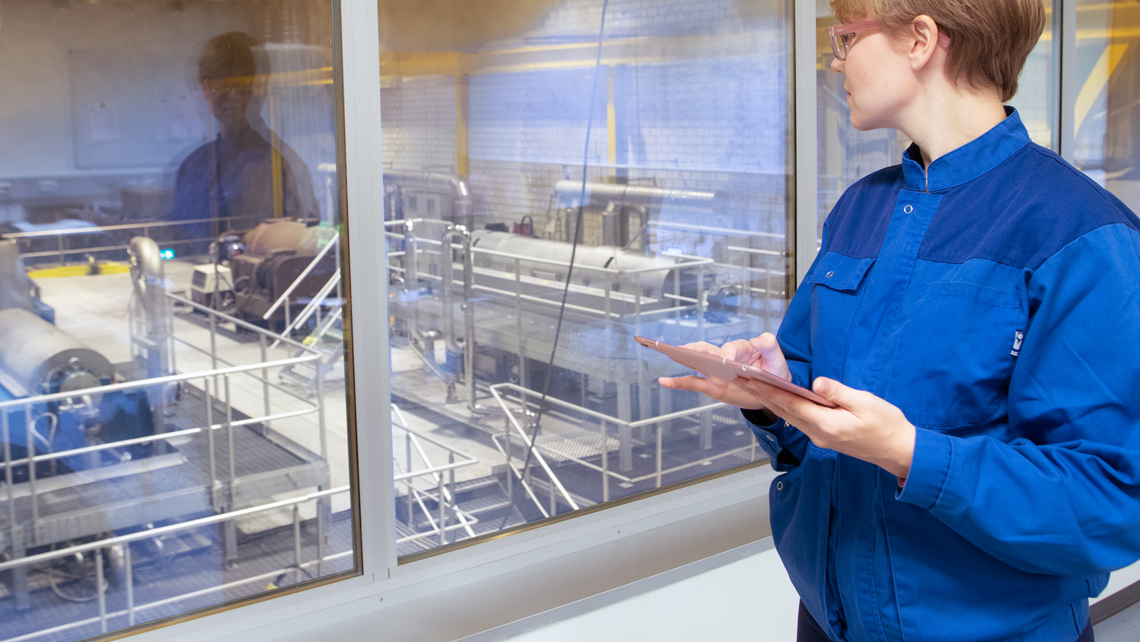The EU is currently undertaking a major review of the Water Framework Directive and associated legislation like the Drinking Water and Urban Wastewater directives.
“We’ll certainly see some big changes on the regulatory front in Europe in the near future,” says Jesper Berner. “Much of the current European legislation on water treatment dates from the 1990s; since then technology has moved on in leaps and bounds, and public awareness of the environment and issues relating to climate change and water quality in general is much higher. The EU is currently undertaking a major review of the Water Framework Directive and associated legislation like the Drinking Water and Urban Wastewater directives.”
“For municipal and industrial water treatment operators, new regulations may mean even greater levels of monitoring and reporting to maintain transparency, as well as stricter requirements for water and effluent quality,” Jesper highlights. “This is where we support our customers, actively following and participating in the latest regulatory developments so that we can help them prepare properly and stay ahead of the game.”
“Our digital offerings, which combine decades of water treatment expertise with the latest sensor and optimization technologies, help customers to adapt their operations in anticipation of future requirements and to improve efficiency and performance in the process.”
Maximize the existing capacity
“The majority of Europe’s water treatment infrastructure was designed and commissioned decades ago, with limited major investment since then,” says Jesper. “At the same time, municipalities are facing increasing demands on capacity with urbanization. Funds for new investments are tight. This is where digitalization and smart process management play an increasingly important role,” he points out.
“Kemira has been leading the way in the introduction of smart chemistry and process management tools like the KemConnect™ platform for sludge dewatering and phosphorus treatment. These solutions can boost efficiency by up to 20% by improving visibility over the water treatment process and enabling predictive and proactive process management based on real-time data. The real value of solutions like these is that you can squeeze more performance results from the existing infrastructure.”
Ensure cost-efficient treatment
“In the water treatment chemicals industry, cost and pricing dynamics haven’t traditionally been major drivers for change,” says Wido Waelput. “However, the situation is going to be different in the near future in the face of rising raw material costs and the fact that many manufacturers of chemical products for water treatment are operating at maximum or close to maximum production capacity. In addition, logistics costs have risen by around 7-8% as a result of limited carrier capacity.”
“From a budgeting perspective, both municipalities and industrial operators need to reevaluate their plans for the upcoming years to take these cost pressures into account. As an industry forerunner we’ve been working hard to develop new products and solutions that help customers gear up for these changes. One way of doing this is ensuring the optimal utilization of existing assets,” Wido adds.
Water treatment customers should demand more from their suppliers in the future, both in terms of product and solution offering and sustainability performance.
Adopt a new way of doing business
“However, it’s not just capital expenditure savings that can offset the impact of chemical price increases. Water treatment customers should demand more from their suppliers in the future, both in terms of product and solution offering and sustainability performance,” Wido says.
“I would encourage operators to look for suppliers that are able to offer new business models,” Jesper adds. “For example, Kemira offers a completely new approach to sludge dewatering, based on smart technologies, a mutually beneficial partnership and jointly agreed performance targets. By improving dewatering performance the service can significantly reduce sludge disposal costs.”
Although the next few years may hold potential challenges for water treatment plants, fresh thinking and new ideas also mean that it can be a bright future. Partnering wisely with regulatory developments, smart process management and innovative new business models in mind, can help municipalities and water intensive industries to drive, not drift, forward in change.

